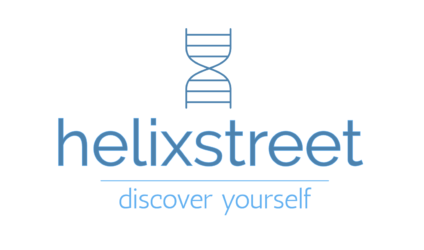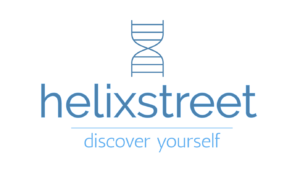The prevailing healthcare model operates on a reactive footing, primarily addressing diseases once they manifest. This approach often results in suboptimal patient outcomes and contributes to escalating healthcare costs.1 A significant contributing factor to this reactive stance is the fragmented nature of health data. Individuals typically lack genuine ownership and control over their comprehensive health information, which is often scattered across various silos. This fragmentation hinders the generation of holistic, personalized insights and curtails meaningful participation in research endeavors that could benefit both the individual and broader scientific understanding.3 The current paradigm reveals a fundamental trust deficit; individuals are often wary about how their sensitive health data, particularly genomic information, is utilized, controlled, and potentially monetized by third parties, leaving them feeling disempowered.3
Genomic data, despite its immense potential to revolutionize health, remains largely underutilized or confined within isolated databases. This limits its power to inform proactive health management strategies and accelerate the discovery of novel therapeutics.7 Furthermore, the challenge of effectively integrating diverse data streams—spanning genomics, clinical records, real-time physiological data from wearables, and lifestyle information—into a cohesive and actionable portrait of an individual’s health persists.3 This “Data Disconnect” is not merely a technical hurdle but also reflects an inefficiency in innovation, where research and development in the pharmaceutical and biotechnology sectors are hampered by restricted access to comprehensive, longitudinal datasets that link rich genomic information with real-world health outcomes.12 Addressing these interconnected issues of reactive care, data fragmentation, lack of user control, and underutilized genomic potential is paramount for transitioning to a more personalized and preventative healthcare future.
Our Vision: Proactive, Personalized, Predictive Health for All, Powered by You
Helixstreet envisions a transformative shift in healthcare, moving towards a future where each individual’s health journey is proactive, deeply personalized, and predictively guided by a dynamic digital replica of themselves.1 This future empowers individuals with profound genomic insights and grants them complete sovereignty over their health data, thereby cultivating a new ecosystem for personalized medicine and fostering collaborative, ethical research.3 The core of this vision is a fundamental rebalancing of control over health information, placing the individual at the center of their health narrative.
The mission of Helixstreet is to empower every person to enhance their life and longevity through the deployment of an advanced AI-driven Genomic Digital Twin. This initiative is built upon an unwavering commitment to trust, transparency, and individual data sovereignty, addressing the prevalent trust deficit in current health data practices.5 By enabling individuals to become active participants and beneficiaries in the health data ecosystem, rather than passive data points, this vision has the potential to disrupt traditional data brokerage models and cultivate more direct, transparent, and equitable interactions between individuals, healthcare providers, and the research community.
Introducing HelixTwin: Your Dynamic Digital Self, Powered by Genomics & AI
HelixTwin is a pioneering platform designed to create a secure, dynamic, and profoundly personalized Digital Human Twin (DHT) for every user. This innovative solution stands at the confluence of genomics, artificial intelligence, and blockchain technology, offering a comprehensive approach to proactive health management and research.
The core components of HelixTwin include:
- Genomic Foundation: Leveraging the advanced DNA sequencing capabilities of Helixstreet.com AG, including deep whole-genome sequencing (WGS) and multi-omics analysis, HelixTwin establishes a rich, high-resolution biological blueprint for each individual.17 This detailed genomic data forms the bedrock upon which personalized insights are built.
- AI-Powered Insights: Sophisticated machine learning and deep learning models, developed and refined by Helixstreet, continuously analyze the foundational genomic data in conjunction with user-consented clinical records (EHRs), real-time biometric data from wearables, and lifestyle information. This multi-modal data fusion generates predictive health insights, personalized recommendations, and early warnings for potential health risks.11 The platform aims to create a “living” health record, moving beyond static data to offer dynamic, proactive capabilities that fundamentally alter how individuals and their clinicians manage health.
- Dynamic & Evolving: The HelixTwin is not a static snapshot but a continuously learning and adapting digital representation. As new data from an individual’s life—be it updated clinical information, ongoing wearable data, or changes in lifestyle—becomes available, the HelixTwin evolves in real-time to accurately reflect their current and projected health status.1 This dynamic nature is crucial for its efficacy in preventative health and personalized intervention strategies.
- User-Controlled & Sovereign: A cornerstone of the HelixTwin platform is its commitment to data sovereignty. Built upon helixstreet.io’s blockchain infrastructure, the platform ensures unparalleled data integrity, security, and user-managed access and consent.3 Individuals retain control over their HelixTwin and the underlying data, deciding with whom and for what purposes it can be shared. This approach directly addresses the trust deficit prevalent in current health data ecosystems and empowers users as active stewards of their own information.
Visually, HelixTwin can be conceptualized as the seamless integration of an individual’s unique DNA blueprint with advanced AI, culminating in a dynamic, data-rich digital representation that serves as their personal health navigator. This redefines personal health management, enabling individuals to transition from passive recipients of care to active managers of their health trajectory, equipped with predictive insights and personalized guidance.
How HelixTwin Works: From DNA to Dynamic Digital Human Twin
The creation and operation of a HelixTwin involve a sophisticated, multi-step process designed to transform raw biological and lifestyle data into actionable, personalized, and user-controlled health intelligence.
Step 1: Comprehensive Data Input
The foundation of each HelixTwin is built upon a rich tapestry of individual-specific data:
- Genomic Data: Helixstreet.com AG employs its cutting-edge Whole Genome Sequencing (WGS) and Long-Read Sequencing technologies to capture a comprehensive and high-resolution view of an individual’s genetic makeup.17
- Multi-Modal Health Data: With explicit user consent, the platform integrates a wide array of additional data types. This includes multi-omics data (such as proteomics and metabolomics), relevant information from Electronic Health Records (EHRs) accessed via secure, standardized APIs (e.g., FHIR where applicable), real-time biometric data streamed from personal wearable devices (e.g., heart rate, sleep patterns, activity levels), and self-reported lifestyle information (e.g., diet, exercise, environmental exposures).3 The successful integration of these diverse data types is a significant technical undertaking, essential for creating a truly holistic DHT.
Step 2: AI-Powered Genomic Analysis & Modeling
Once collected, the data is processed and analyzed by Helixstreet’s advanced AI engine:
- Proprietary Algorithms: Helixstreet’s specialized machine learning (ML) and deep learning (DL) algorithms are applied to interpret the complex genomic datasets, identifying significant variants, predispositions, and potential biological pathways.11
- Multi-Modal Data Integration: The AI models are designed to fuse genomic information with clinical, biometric, and lifestyle data, building a comprehensive and interconnected model of the individual’s unique physiology and health status.3
- Federated Learning: Where applicable, federated learning techniques can be employed to train and refine AI models on distributed datasets without centralizing sensitive raw data, thereby enhancing privacy while improving model accuracy and generalizability.22
- Explainable AI (XAI): A commitment to XAI ensures that the insights and predictions generated by the AI are not “black box.” Understandable explanations are provided to both users and their clinicians, fostering trust and facilitating informed decision-making.25 This transparency is critical for the adoption and effective use of such a sophisticated system.
Step 3: Dynamic Digital Twin Creation & Visualization
The analyzed and integrated data culminates in the creation of the HelixTwin:
- Personalized Virtual Replica: A dynamic, virtual representation of the individual is constructed, capable of simulating biological processes, predicting health trajectories, and modeling responses to potential interventions.3
- Intuitive User Interface: Users and their designated clinicians can access and interact with the HelixTwin through intuitive dashboards. These interfaces visualize complex health insights, risk predictions, personalized recommendations, and progress tracking in an easily understandable format.14
Step 4: User Control & Secure Data Management (helixstreet.io)
The helixstreet.io blockchain platform underpins the security, integrity, and user-centric governance of the HelixTwin:
- Blockchain-Secured Data: Genomic data hashes, key DHT insights, and consent ledgers are secured on the blockchain, ensuring tamper-proof records and verifiable data provenance.19 Sensitive raw data itself can be stored off-chain in secure, encrypted user-controlled vaults, with access managed via the blockchain.
- Data Ownership & Granular Access Control: Individuals manage true ownership of their HelixTwin data. Through mechanisms like Decentralized Identifiers (DIDs) and Verifiable Credentials (VCs), users can grant granular, revocable access permissions to specific clinicians, family members, or researchers for defined purposes and durations.3
- Dynamic Consent Management: Smart contracts automate the consent process, providing a transparent, auditable, and user-driven mechanism for agreeing to data use in research or for receiving personalized services. This allows consent to be specific, informed, and easily modifiable by the user at any time.32
- “Helixgroups” for Research Contribution: Users have the option to contribute their de-identified or permissioned data to “Helixgroups.” These groups, potentially structured as Decentralized Autonomous Organizations (DAOs), would facilitate community-governed and validated research initiatives, with potential mechanisms for rewarding data contributors, thus fostering a data flywheel effect where increased participation enhances the value and accuracy of the entire ecosystem.19
This four-step process illustrates a paradigm shift from fragmented, provider-controlled data to integrated, intelligent, and individual-controlled health information, paving the way for a new era of personalized and proactive healthcare.


